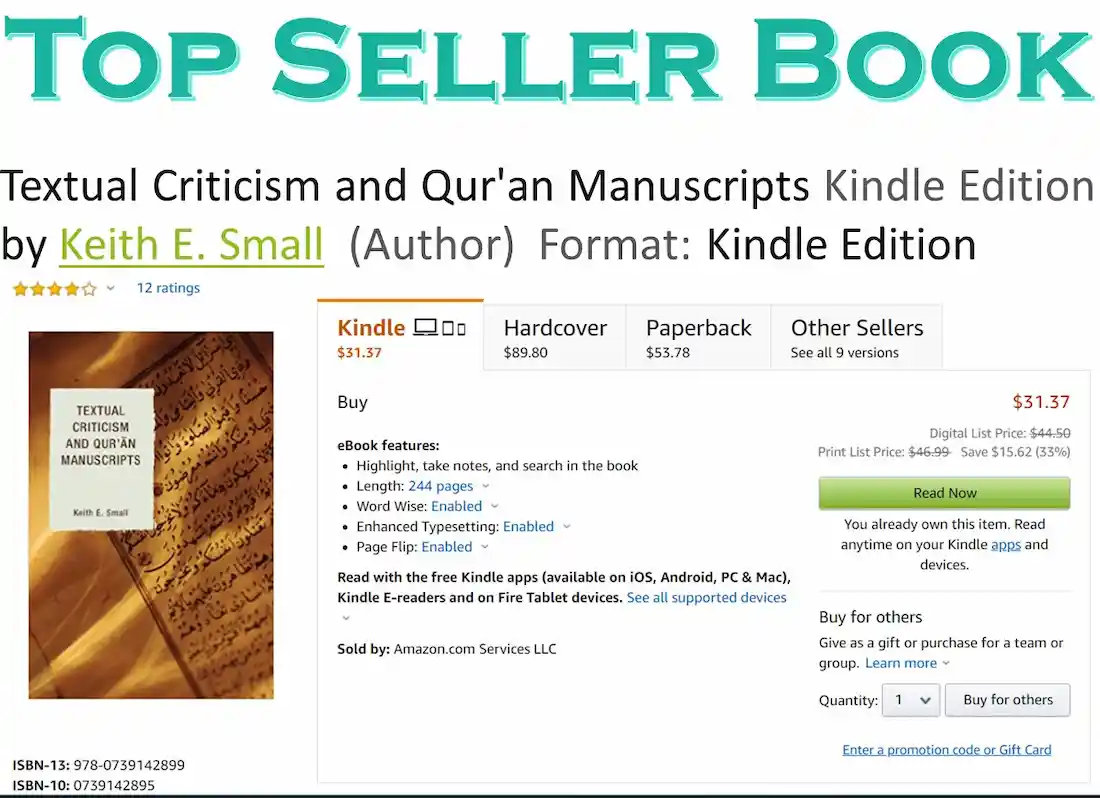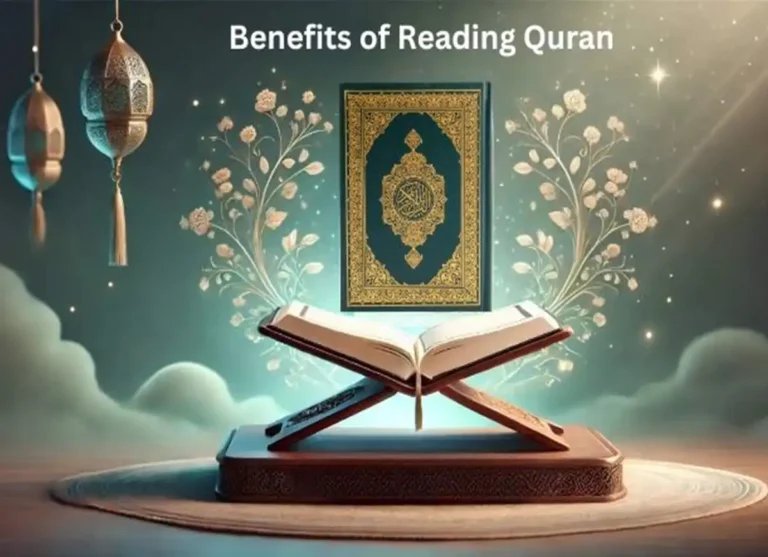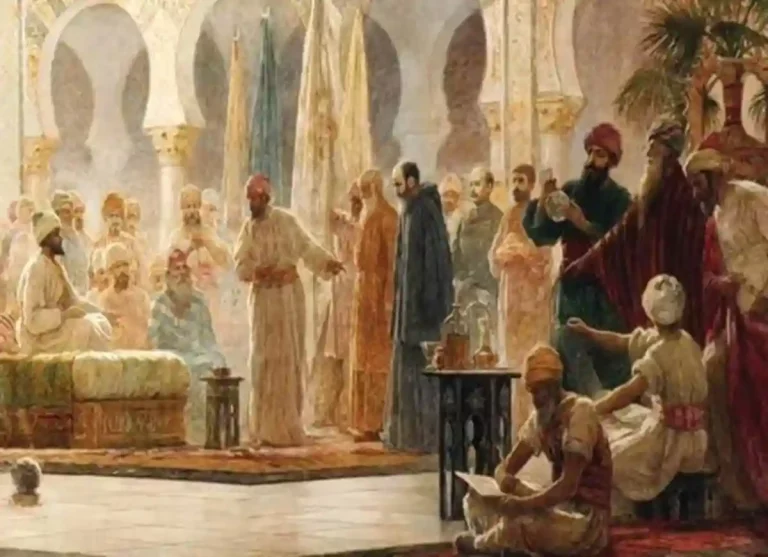Textual Criticism and Qur’an Manuscripts – What is the Qur’an’s Critical Text? It is well-known that the Qur’an has not been given a critical text based on extant manuscripts.
It is almost a given that scholars studying a text should start with one that has been compiled and analysed from the best manuscripts. Qur’anic studies are based on an open knowledge of the Qur’an’s lack, so such methods and their results had to be modified to accommodate this fundamental deficit.
Many Western scholars have expressed their dismay at the lack of such a text. Otto Pretzl, Gotthelf Berstrasser and Arthur Jeffery worked together on complementary projects in the 1920s and 1930s. Jeffery was the only one to complete the necessary sources to start the construction of a critical text for the Qur’an. Rippin wrote 1982 about Jeffery’s failed attempt.
Jeffery’s 1957 article “The Present Status of Qur’anic Studies” outlined his main interest and that of many others at the time. He wanted to create a printed Qur’an text complete with an apparatus of orthographic and textual variants. The project was never realized, and it doesn’t seem likely it will ever. 2
Recent discoveries of early manuscripts from Yemen and the rediscovery by Bergstrasser of an ancient Qur’an photo archive have rekindled interest in this project. Also, computer software has been developed that can solve some of the practical collation issues. 5
However, even with this beginning, Neuwirth & Sinai are right to describe the overall situation as “veritable list” of lacunae. There is “no critical edition, no free access all the relevant manuscript evidence and no clear conception of [the Qur’an]’s cultural and linguistic profile, and no consensus about the fundamental issues of methodology,” just to name some of the most glaring omissions. 6
Donner offers a helpful comment that, given the limitations in the production of a critical version of the Qur’an, it is more important to do preliminary work on tools and methods for the eventual goal of creating a critical edition. 7
This book aims to add to that preliminary work. It explores what can be accomplished through the careful compilation of textual variants taken from extant manuscripts, early Islamic literature, and uses them to address questions about textual origins as well as the history of Qur’an.
Textual Criticism and Qur’an Manuscripts – This exercise could be extended to include the text in the oldest Qur’an manuscripts. It would give a better foundation for approaching the many issues that are currently being addressed in academic Qur’anic studies.

The Plan of This Book
Textual Criticism and Qur’an Manuscripts – The book is divided into four parts. Each part contains one or more chapters. Part 1 contains introductory material. It consists of two chapters. Chapter 1 includes the introduction. Chapter 2 has a description and photos of the manuscripts and a compilation of their texts for Surah 14.35-41. Part 2 focuses on the six textual variants that were found in the manuscripts.
The following chapters 3-8 describe the types of variants that can be found: orthographic variations (chapter 3, copyist errors (chapter 4,), diacritical mark variants, and variants affecting grammar [chapter 5], variants to consonantal lines of text (chapter 6, Rasmvariants), variants to verse markers (chapter 7), physical corrections to manuscripts (chapter 8).
Part 3 is a review of these variants. It includes three chapters that examine how they compare to Islamic records textual variants (chapter 9) and about intentionality and non-intentionality (chapter 10) and the role orality played in the textual transmissions of the Qur’an (chapter eleven). Part 4 is Chapter 12, which is devoted entirely to conclusions.
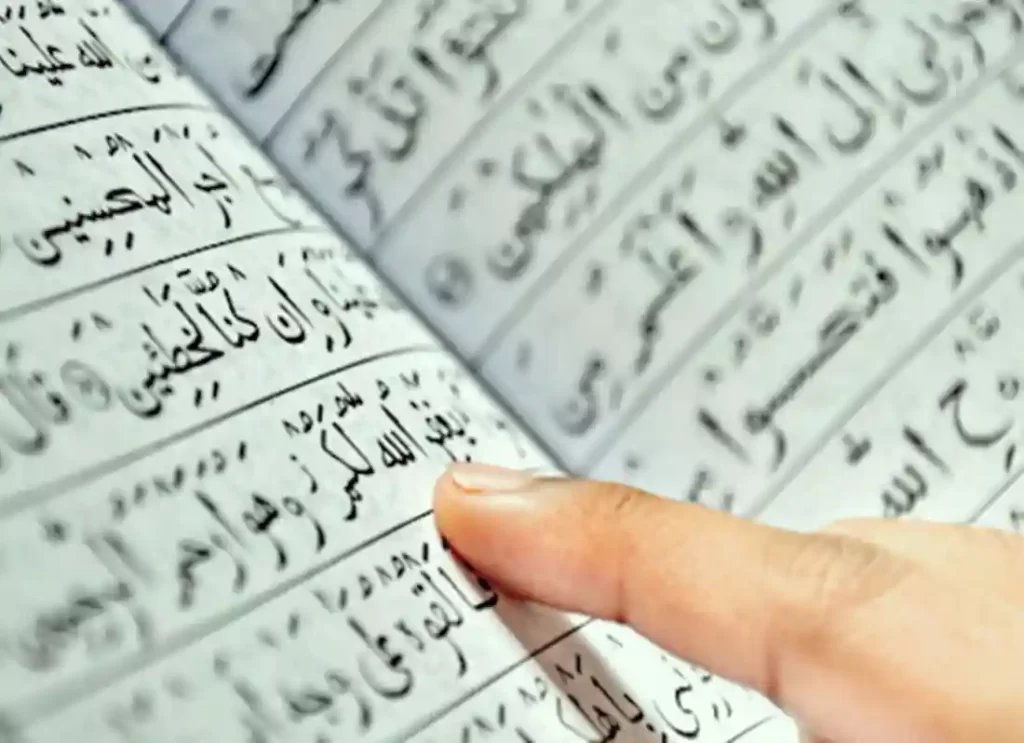
Methodology
Textual Criticism and Qur’an Manuscripts – Reasoned Eclecticism, a method of textual critique, is used for this study. This method has been used for over a century by most New Testament scholars. It is the method that has been used by the majority of New Testament scholars for at least a century. 8 Holmes outlines the fundamental approach to Reasoned Eclecticism. 9
I refer to “reasonable eclecticism” as an approach that takes into account all evidence available, both external (i.e. that provided by the manuscripts) and internal (considerations that have to do with the tendencies, errors, and habits of scribes, or the style and thought patterns of an author). This approach has a central guideline: The variant that most accurately accounts for both the origin and the evolution of all other variants is the most original.
This method has been proven useful in two ways. It is based on an academic discipline that has been around for over two centuries. It is also a tried and true method of examining textual variants within ancient manuscripts from many literary traditions.
This method is flexible enough to accommodate the many features in Arabic scripts. Fourth, it does not adhere to any particular religious, political or academic ideology. It can be used to treat ancient manuscripts with respect, as well as a realistic and critical attitude towards human influences on ancient book production.
Textual criticism must be applied to Qur’an manuscripts in order to establish the earliest form of the text. There are also important historical and orthographic issues that textual critic should address.
E. Hobbs observed in 1979 that scholars’ attention shifted between searching for original texts and tracing their transmission.
These tendencies have a cyclical nature. Today there is more interest in establishing the URL. However, this double interest is often reflected in textual critique in many fields today. To recover the Urtext but also to establish the text’s history (or in place of the first, which is impossible),
Threety years later, Qur’anic Studies is continuing to explore these topics with renewed energy. This paper demonstrates how traditional methods for textual criticism can be used to support both these goals.

What is the “Original text” of the Qur’an, and
Textual Criticism and Qur’an Manuscripts – The question “What is the original text of the Qur’an?” might seem simple and obvious. It becomes complicated when you have to deal with the intricate production of ancient books.
This is especially true if one is dealing in a literary tradition that uses a combination of oral and written literary conventions. The original text is the state of a text at the time it left the author’s desk for publication and distribution. Oral dynamics can be introduced to allow for a variety oral performances that have been preserved and distributed via oral and written means. These oral performances could all compete for the title of “originals.”
Qur’anic studies has had a significant discussion about the search for the Urtext of Qur’an. Donner provides a helpful summary of the current search for this type of text and addresses many outstanding questions.
It is a common assertion in popular Islamic discourse that the Qur’an text has been perfectly preserved since its transmission to Muhammad. However, the early and middle medieval Islamic scholarship were quite open to textual variations and missing parts of the Qur’an. They also did not make any claims about perfect transmission.
The flexibility that was described in earlier periods of Islamic scholarship is also confirmed by the study of Qur’anic manuscripts. Eldon Epp, a 1999 scholar of New Testament studies, explored the meanings of “original text” and found that they have been used with varying meanings and lack precision.
He showed that the process of an oral text or written text becoming published books was not one event, but rather a series of discrete steps. Rippin made the crucial point that these stages were interconnected. 12
He states that there are three elements that must be remembered: a fixed text body, a fixed text body that is available in a written format, and that the written form acquires authority among a group. Each of these elements implies that there were processes by which fixedness, written form and consensus of authority were achieved. These processes must be clearly acknowledged and delineated in any explanation or definition of the Qur’an’s original text.
Also, different views on the history of Qur’an’s written history will have different views about the time and processes that were required for the Qur’an’s written text to acquire these three facets.
Eldon Epp, a New Testament scholar, has modified a useful scheme to make it more practical. His diagram describes the book production process by defining four categories, which this writer expanded to five: 13
- Predecessor: The oral or written sources that the author used.
- Autographic Text-Form: The form that the author created as it left his desk.
- Authoritative Text-Form: A form of text that has been granted a certain degree of local geographical consensual authority.
- Canonical text-form : A form of the text with a high degree of geographic consensus.
- Interpretive HTML-form Any later, intentional reformulation for stylistic or practical reasons.
This will be the basis of this book. These terms will be used to describe technical terms that are used at various points in the development of the text. A lack of early Qur’an materials means that it is difficult to document the earliest written and oral portions. We have early edited portions of only a small portion of the material that Muhammad is credited with.
This limitation being considered, the focus of this book will be on the examination of existing written material. However, it will also acknowledge that there was an oral transmission to which the written transmission was closely related. What can be recovered is closely chronologically related to previous versions of the text.
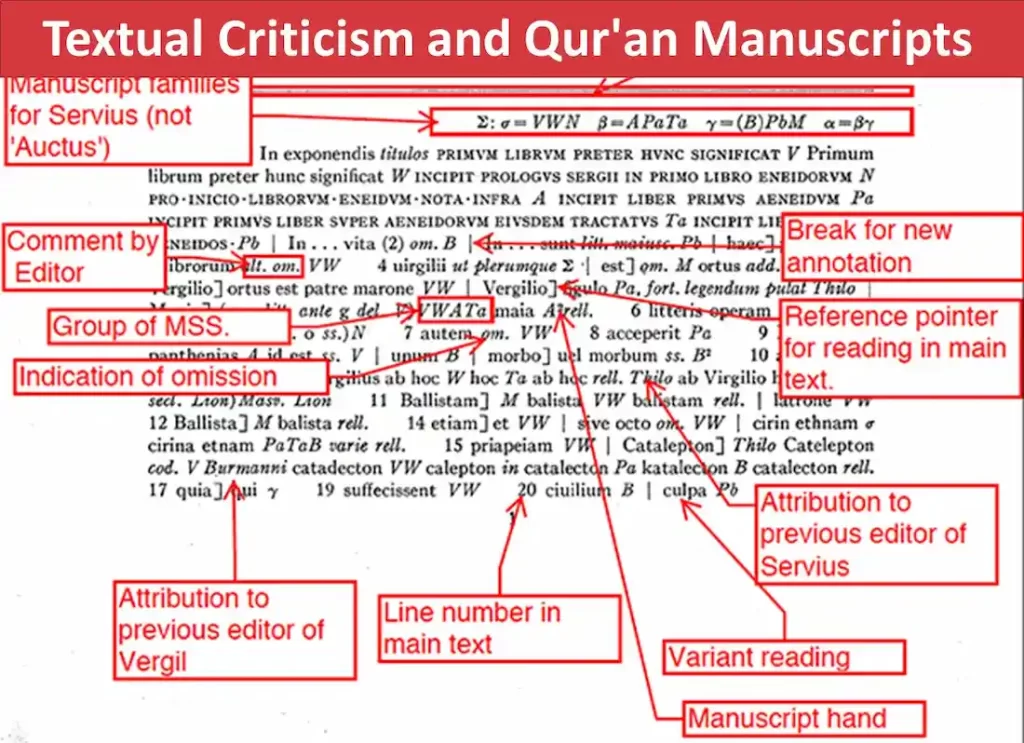
Original Text Issues of the Qur’an
Textual Criticism and Qur’an Manuscripts – These categories can be used to determine which Qur’an text is appropriate for text-critical analysis. To get a thorough review of Islamic traditions regarding the Qur’an’s initial collection, the reader is encouraged to consult both the Western academic critiques and Islamic treatments. 14 In order to help with the textual criticism of the Qur’an’s original text, it would be helpful to make some comments about traditional views on the Qur’an’s collections.
These parts of Muhammad’s material, whether oral or written, are equivalent to Epp’s Predecessor text form. Although they were a loose collection, the autographic material was not put into a single text-form. You could also refer to autographic text-forms.
These materials were used by his Companions after Muhammad’s death. They became authoritative versions. You can see this in that the Companions used them in different locations, as well as reciting them.
These forms can be considered Authoritative text formats, each one authoritative in its own way and within its own geographic sphere. These versions were allegedly the cause of conflicts that threatened the unity and stability of the empire. ‘Uthman created a single version to address the problem. According to tradition, ‘Uthman used a Companion’s basic version of ‘Umar’s for this, but it was left in the hands of his daughter Hafsa’a after ‘Umar died. This version was edited by ‘Uthman, possibly adding additional material or removing material.
This was the Canonical text form. Later versions, including those by al-Hajjaj or Ibn Mujah’id, that improve the orthography or add consonantal pointing and vocalization notation systems could be called Interpretive text-forms. This action by ‘Uthman would have prevented us from fully recovering the Companions’ authoritative text-forms or the Qur’an’s autographic predecessor text forms.
If Islamic tradition is true, then a Canonical text-form from a very early period can be found if the dates given for the Qur’an manuscripts are accurate and as early as possible. This part of Islamic tradition has been confirmed by Western Qur’an scholarship over the past century. No manuscripts with the forms of the text can be clearly considered to be an Authoritative or Autographic Predecessor text form.
The majority of Qur’an manuscripts that are still extant contain the Canonical and later Interpretive text forms, with possible exceptions of a few Qur’anic Palimpsests. These manuscripts are still being studied.
These texts are similar to the Canonical text-form but have more important textual variants than any other Qur’an manuscripts. The difficulties encountered by Western scholarship in reconstructing the Authoritative texts-forms of Companions have been revealed in part by the inadequacies of secondary records.17 This task is also complicated by the lack of consistency in Islamic records.
These records have been questioned as to their authenticity. 18 Although these records could be used as a starting point for partial reconstructions of Qur’an material available after Muhammad’s death it is only a tentative one.
Is it a wasteful exercise to try and find a critical text that reconstructs the Autographic text form of the Qur’an? By no means. These are the main .

For more information about the Textual Critique And Quran Manuscripts PDF book click to download it for free
Product details
- ASIN : B00J972RR4
- Publisher : Lexington Books
- Publication date : April 22, 2011
- Language : English
- size : 7777 KB
- Text-to-Speech : Enabled
- Reader : Supported
- Enhanced typesetting : Enabled
- X-Ray : Not Enabled
- Wise : Enabled
- Print length : 329 pages
- Lending : Not Enabled
Keith E. Small
Discover more of the author’s books, see similar authors, read author blogs and more
You May Also Like More Same Post


